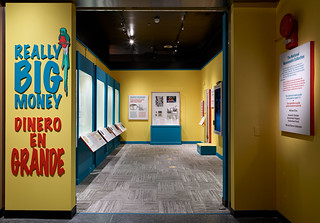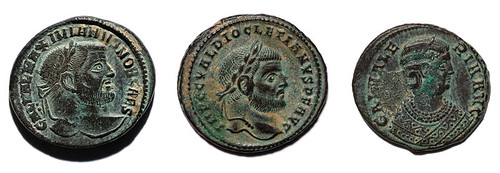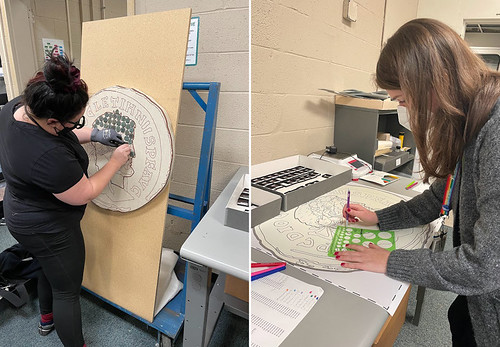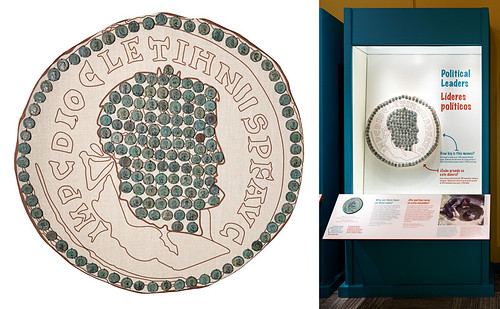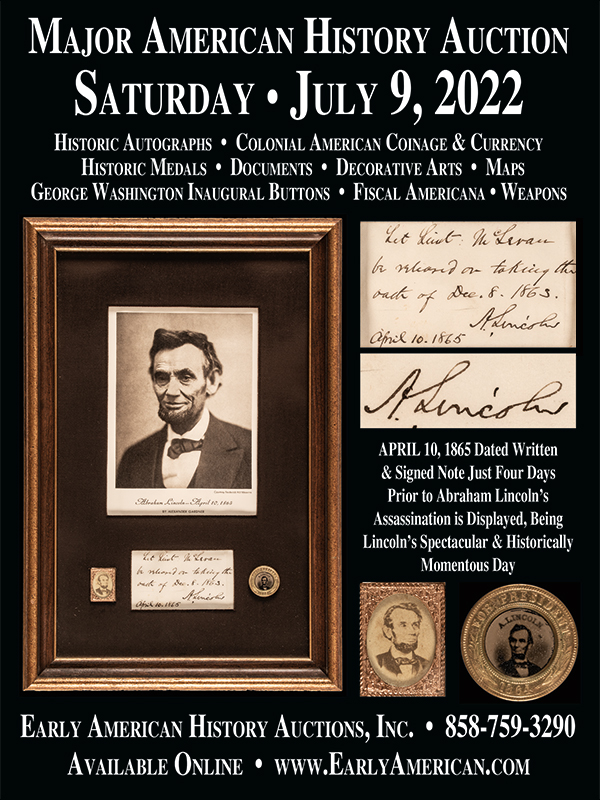
PREV ARTICLE
NEXT ARTICLE
FULL ISSUE
PREV FULL ISSUE
V25 2022 INDEX E-SYLUM ARCHIVE MAKING THE REALLY BIG MONEY EXHIBITJennifer Gloede and Laura McClure of the National Numismatic Collection published a blog article about the Smithsonian's new exhibition "Really BIG Money". Here's an excerpt. Check out the time-lapse video! -Editor
Before we dive into that challenge, here's the context: Really BIG Money is a new exhibition featuring monetary objects from the National Numismatic Collection that was written and designed with elementary-aged visitors in mind. Collections managers and mount makers are a key part of bringing exhibitions like this one to life. Collections managers care for the objects in a variety of ways, including cataloging and safely handling them. Mount makers create the structures that safely hold objects while they are on display. Creating a giant coin out of coins requires both of these skill sets—and a lot of patience.
With that covered, let's get back to these 165 Roman coins and what they have to do with being really big. The coins we worked with were selected by the exhibition's curators to represent money that is These three coins illustrate some of the shared features of the coins in the display—a central portrait surrounded by text, beaded border, and similar color—but they also have unique details. (NU.81.53.0768, NU.81.53.0322, and NU.81.53.0351) The coins in this group represent 10 different rulers and are roughly 1,700 years old. Many of them look similar, but each coin is unique because they were hand struck and have experienced varying amounts of wear over time. The coins are not physically marked with a museum catalog number, but they each have a number that is recorded on their storage box and in the museum's database. Making sure that these catalog numbers remained linked to the correct coins was one of our most important jobs. To an expert in coins and medals, it might be simple to read the text on the coins, find the mint mark, and distinguish these very similar coins from each other. However, in our process of mounting and tracking, we had to think carefully about the deinstallation process. We had to assume that someone with no numismatic experience could be the person who takes these objects off display and puts them back into storage. It may be unlikely that that would happen, but it is crucial to make the process as simple as possible and not rely on numismatic expertise. Just in case! To prepare for this project, Jennifer cataloged each coin in the museum's database, carefully noting its weight, diameter, thickness, place made (mint), and ruler depicted. She also photographed each object to capture its unique details. At the same time, Laura began the time-consuming process of making pin mounts with two pliers and a miniature belt sander. The panel that the coins would be mounted on was prepared as well. The exhibition designer created an outline based on an actual coin, which was then printed on fabric. The fabric was carefully wrapped over a layer of Ethafoam and Medex to create a stable base on which to pin the coins. Finally we printed a full-size image of the outline to use as a map of the objects. As Laura took a coin, one at a time, and pinned it to the board, Jennifer recorded the placement of the coin and the catalog number. We created a color-coded system where each ruler was a different color so it could be easily found on the map and then on the board itself. Laura began to mount the coins in the center of the silhouette of the coin head, drawing on her past experience with mosaic tile work! She mounted each coin with three pin mounts to secure it to the fabric-wrapped substrate. When the silhouette was completed, she began to add coins around the perimeter. We completed mounting these objects in about one and a half days. The hours we had spent preparing saved us time during the mounting process. Teamwork and constant communication were important to the success of the project. Here is the final product! We're excited to welcome visitors to the museum to see these and the many other objects in Really BIG Money!
To read the complete article, see:
To read the earlier E-Sylum article, see:
Wayne Homren, Editor The Numismatic Bibliomania Society is a non-profit organization promoting numismatic literature. See our web site at coinbooks.org. To submit items for publication in The E-Sylum, write to the Editor at this address: whomren@gmail.com To subscribe go to: https://my.binhost.com/lists/listinfo/esylum All Rights Reserved. NBS Home Page Contact the NBS webmaster 
|
